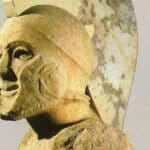Have you ever considered the rich tapestry of symbols ancient Greeks used to represent themselves, long before the singular national flag we recognize today? Ancient Greece was not a monolithic nation but a vibrant mosaic of independent city-states, each radiating its own distinct identity. Picture Athens, radiating intellectual brilliance, alongside Sparta, embodying a formidable warrior ethos, both proudly showcased through unique symbols and emblems. These were prominently displayed on their shields, banners, and even architecture. Far from mere decorative markings, these were potent calling cards, rallying cries, and definitive statements of communal belonging. As Greece transitioned from a collection of fiercely independent poleis (city-states) to more expansive empires and eventually a unified country, its flags and symbols evolved in tandem, reflecting the ebb and flow of power, profound cultural shifts, and the very essence of what it meant to be Greek. Let us delve into this fascinating historical journey, revealing the heart and soul deeply woven into Greek symbolism, from powerful ancient emblems to the iconic modern Hellenic standard. You can explore more about Greek city symbols online.
The Dawn of Distinct Emblems: City-State Identities and the Spartan Lambda
Unlike modern nations that fly universally recognized national flags, ancient Greece operated as a diverse mosaic of independent city-states. Envision them not as a unified nation, but as distinct entities, each requiring its own unique identifier. These city-states prominently displayed their unique symbols and emblems on their shields, battle standards, and civic architecture. For instance, Athenian forces often featured the owl, a symbol widely associated with Athena, their patron goddess of wisdom and warfare. This emblem conveyed more than aesthetics; it was a clear declaration of their loyalties, intellectual prowess, and founding principles. Similarly, the powerful Macedonian Empire, particularly under Philip II and Alexander the Great, utilized the Vergina Sun, a striking sixteen-ray starburst, as a prominent emblem on shields and banners, symbolizing their royal dynasty and asserting their regional dominance.
But what about Sparta, the venerable city-state synonymous with unparalleled warrior discipline and an austere way of life? How did their unique identity manifest itself through ancient Greek emblems?
The Spartan Lambda: More Than Just a Letter
Sparta, celebrated for its legendary warriors and rigorous way of life, conspicuously adopted the lambda (Λ) symbol. This eleventh letter of the Greek alphabet, resembling an inverted “V” or a sideways “A,” stood for Lacedaemon, the name of the region and the very heart of their homeland. Yet, the lambda transcended a mere geographical identification. It powerfully embodied core Spartan values: unwavering bravery, strict discipline, and unbreakable unity. The sight of that lambda emblazoned on a Spartan shield, gleaming under the Aegean sun, instantly communicated strength and resolute determination. While some historians propose the symbol might have also represented the rocky terrain of Laconia or even a connection to the god Apollo, its primary function was to unequivocally broadcast their identity and pride as “Lacedaemonians” or “Laconians.” It reinforced their refusal to retreat or surrender and their status as elite warriors who “ruled over men.”
Shield Symbols: A Battlefield Canvas
Instead of modern flags, Spartans predominantly displayed their vital symbols on their shields for immediate identification on the chaotic and often dust-obscured battlefield. Amidst the clang of bronze and steel, the swirling dust, and the confusion of combat, shield symbols provided the decisive answer for distinguishing friend from foe. While the lambda remained a common and unifying element, reinforcing their shared Lacedaemonian identity, these emblems were not always rigidly standardized across all Spartan warriors. Individual soldiers sometimes bore their own personal devices, adding a subtle layer of individuality to the otherwise famously uniform ranks of the Spartan army. This practice highlighted that while the state’s identity was paramount, individual prowess was also recognized.
The legacy of Spartan symbols persists even as Sparta’s dominance eventually waned. The lambda continues to evoke enduring images of courage, discipline, and absolute loyalty. It serves as a timeless reminder of a society that prioritized military excellence above nearly all else. These symbols offer invaluable insights into the Spartan mindset and their profound, lasting impact on ancient Greek history. A single symbol, meticulously etched onto a shield, was capable of representing an entire culture and its core values, a powerful testament to the enduring ability of symbols to transcend the millennia and resonate deeply even today.
| Aspect | Description |
|---|---|
| Formal Flags (Ancient) | Absent in the modern sense; city-states used prominent symbols on shields, banners, and civic structures for representation. |
| Primary Spartan Symbol | Lambda (Λ), representing Lacedaemon (the region). |
| Other Symbol Interpretations | Lacedaemon’s founder, the mountainous territory of Laconia, divine favor (Apollo), or the concept of “ruler of men.” |
| Symbol Placement | Primarily on hoplite shields for battlefield identification and psychological warfare. |
| Significance | Fostered unity and camaraderie, clearly communicated identity, embodied core Spartan values like bravery, discipline, and resilience, and served as a rallying point in conflict. |
The Hellenic Standard: From Revolution to a Unified National Flag
The journey of Greece, from fragmented city-states with individual emblems to a unified nation under a single, instantly recognizable flag, encapsulates a saga of conquests, arduous struggles for freedom, and the diligent construction of a shared national identity. This evolution culminates in the iconic blue and white flag we see today, a symbol laden with profound historical and cultural meaning.
Birth of the Modern Flag: The Greek War of Independence
The genesis of the modern Greek flag is rooted firmly in the Greek War of Independence (1821-1829). As revolutionaries battled against centuries of Ottoman rule, they desperately needed a powerful, unifying symbol to rally around and distinctly differentiate themselves from the opposing forces. This urgent need gave birth to the unified Hellenic standard. The design was officially adopted by the First National Assembly at Epidaurus in January 1822. Initially, this striped flag served as the official naval ensign, distinguishing Greek vessels at sea and in foreign ports. Meanwhile, a simpler white cross on a blue field was often used as the land flag within the liberated territories.
Design and Symbolism: Colors of Freedom and Faith
Every element of the Greek flag holds deep symbolic significance. The nine horizontal stripes, alternating between five blue and four white, are widely interpreted to represent the nine syllables of the fervent revolutionary motto: “Eleftheria i Thanatos” (Ελευθερία ή Θάνατος) – “Freedom or Death.” This powerful rallying cry fueled the spirit of independence. Alternatively, some interpretations suggest the nine stripes symbolize the nine Muses of Greek mythology, revered goddesses of the arts and sciences, connecting the nation to its classical heritage.
The bold blue hues evoke Greece’s iconic seas and expansive skies, which remain central to Greek life and geography. White symbolizes purity, peace, and the pure intentions of the Greeks courageously fighting for their freedom. Crucially, the white cross situated in the upper-left canton reflects the profound significance of Orthodox Christianity in Greek culture and identity. For centuries under Ottoman occupation, the Orthodox Church served as the bedrock of Greek language, traditions, and national consciousness, making the cross an indispensable emblem of faith, heritage, and resilience.
Transformations and Evolution Through Time
The question of how did Greek flags evolve – National Identity has been a dynamic process throughout Greek history. The flag’s design has undergone several notable changes, each reflecting a crucial moment in Greece’s evolving story and showcasing its historical journey through different governmental forms:
- Monarchy (1833-1924, 1935-1973): During periods when Greece was a kingdom, royal symbols were temporarily incorporated. For example, during the reign of King Otto (1832-1862), the Bavarian arms of the Wittelsbach dynasty were superimposed in the center of the cross on the naval ensign. Later, a golden royal crown was added, primarily to the state and war flags, to symbolize the Glücksburg dynasty.
- Republican Eras (1924-1935, 1974-Present): With the establishment of the Second Hellenic Republic, and again after the fall of the military junta in 1974, the royal crown and other monarchical symbols were removed, clearly indicating a significant shift in political power and the embrace of democratic ideals.
- Shade of Blue: While the core design remained, the precise shade of blue has varied over time, sometimes being lighter, sometimes darker. A darker “midnight blue” was notably introduced by the Regime of the Colonels (1967-1974), though the exact shade is not officially stipulated by law, leading to some variations in practice, with a traditionally intermediate blue being common.
- Sole National Flag (1978): The striped flag, initially primarily a naval ensign, was officially established as the sole national flag of Greece in 1978, consolidating its status as the singular symbol for all uses, both civil and military, within the country and abroad.
The Current Flag: A Symbol of Enduring Pride
Today, the contemporary Greek flag features nine blue and white stripes, with a blue square canton in the upper hoist corner bearing a white cross. This design embodies modern democratic values and reverently honors the nation’s rich past. The flag serves as a powerful emblem of national pride and is observed flying majestically at government buildings, schools, and Greek embassies worldwide. Significant national holidays like Greek Independence Day (March 25) and Ohi Day (October 28) are marked by widespread flag display and fervent celebrations. Strict flag protocol ensures it is always treated with the utmost respect, symbolizing the country’s enduring cultural significance and its unwavering spirit. One can consistently observe the Greek flag flying at the Acropolis in Athens, forging an indelible link between Greece’s glorious past and its vibrant present.
Preserving Heritage: The Enduring Legacy of Greek Flag History
The Greek flag, an instantly recognizable symbol worldwide, carries within it a profound testament to its Future-Proofing – The Enduring Legacy – Greek Flag History. It transcends mere textile and pigment; it encapsulates a nation’s tumultuous journey, its arduous struggles, and its unwavering spirit. The dynamic history and profound symbolism of the Greek flag powerfully illustrate how Greek flags evolved – national identity, mirroring the nation’s profound transformation through revolution, monarchy, and democracy.
The Colors of Freedom: Blue and White
The fundamental question of “Why blue and white?” leads us directly to the heart of Greece itself. The azure blue perfectly mirrors the breathtaking Mediterranean Sea and the expansive, boundless Greek sky—two elements intrinsically woven into the nation’s identity and geographical essence, representing vastness, freedom, and the natural beauty of the homeland. White, conversely, symbolizes the purity of the Greek struggle for independence and the lofty ideals it passionately represented during the Greek War of Independence. It also signifies peace and honesty, virtues cherished by a nation that endured centuries of foreign rule.
The Cross: A Cornerstone of Faith and Continuity
Dominating the flag’s upper left corner, the white cross is far from a simple decorative element. It stands as a powerful declaration about the indispensable role of Orthodox Christianity in shaping Greek culture and forging its profound national consciousness. For centuries under Ottoman rule, the Orthodox Church served as a vital guardian of the Greek language, cherished traditions, and resilient identity, acting as a beacon of hope and cultural continuity. Consequently, the cross inherently represents faith, cherished heritage, and unwavering resilience, a testament to the spiritual core that sustained the Greek people through adversity.
The Stripes: A Matter of Interpretive Identity
Perhaps the most debated aspect of the flag’s design is the underlying meaning behind its nine blue and white stripes. While no single, definitive answer exists, the most popular and widely accepted theory connects them to the nine syllables of the powerful phrase “Eleftheria i Thanatos” (Ελευθερία ή Θάνατος) – “Freedom or Death,” which served as the fervent battle cry during the Greek Revolution. This interpretation fiercely links the flag to the nation’s foundational struggle for liberty. Other interpretations suggest they represent the nine Muses, the revered goddesses of the arts and sciences in Greek mythology, highlighting Greece’s rich intellectual and artistic legacy. A simpler explanation postulates they represent the nine letters comprising the Greek word for “Freedom” (Ελευθερία). Regardless of the precise origin, the nine stripes add a layer of depth and symbolism, inviting contemplation on the nation’s defining characteristics.
A Symbol in Constant Evolution and Enduring Cultural Significance
It is crucial to remember that the Greek flag has not always appeared exactly as it does today. Its design has significantly evolved over time, meticulously reflecting the nation’s profound political transformations. During periods of monarchy, royal symbols, such as the Bavarian coat of arms or a royal crown, were thoughtfully incorporated, visually tying the state to its ruling dynasty. These symbols were later removed during the transition to a republic, powerfully illustrating how a nation’s flag can visually narrate a story of shifting power dynamics and evolving societal values. This dynamic evolution contributes to the flag’s ongoing cultural significance, making it a living historical document. The existence of various military, regional, and municipal flags, as detailed in extensive vexillological records, further underscores the rich and varied graphical heritage of Greece, each contributing to the broader narrative of national and local identity.
Actionable Steps for Ensuring Future Relevance
How can we collectively ensure the Greek flag’s enduring impact and legacy for generations to come, truly “future-proofing” its significance?
- Educators can comprehensively integrate the flag’s rich history, intricate symbolism, and its evolution into core curricula across all educational levels, thereby cultivating a deeper, more nuanced sense of national pride and fostering profound cultural appreciation among younger generations. This includes exploring its historical variations and the stories behind them.
- Tourism boards can strategically highlight the flag’s historical significance within all promotional materials, digital campaigns, and guided tours, significantly enriching visitors’ understanding of Greek culture, its profound past, and the resilience of its people. This could involve creating themed routes focused on historical flag sites.
- Cultural organizations can actively host diverse flag-raising ceremonies, educational workshops, and various cultural events specifically showcasing the flag and its powerful symbolism, thereby promoting Greek heritage, strengthening vital community bonds, and encouraging ongoing public discourse about national identity.
- Digital Archivists and Historians can collaborate on creating comprehensive online repositories and interactive digital exhibits that document the full spectrum of Greek flags—from ancient emblems to modern standards, including military, regional, and historical variants. This would provide an accessible, centralized resource for research, education, and public engagement, ensuring the detailed history of Greek flags is preserved digitally for future generations.
Ultimately, the Greek flag remains a potent emblem of national pride and profound unity for Greeks residing across the globe. It carries within its threads a rich tapestry of history, unwavering faith, and indomitable determination. It serves as a continuous reminder of Greece’s remarkable historical journey, a silent storyteller of a nation’s soul. What will its future hold? Only time will definitively tell, but its enduring legacy is unequivocally secure, woven into the very fabric of Greek identity.
- Unearth ancient rome achievements: Engineering feats & legal legacies, examined - August 13, 2025
- Unlock ancient rome army ranks: Power, impact & legion command - August 13, 2025
- Conquer Your Exam: Ancient Greece Quiz Ace It Now! - August 13, 2025
















